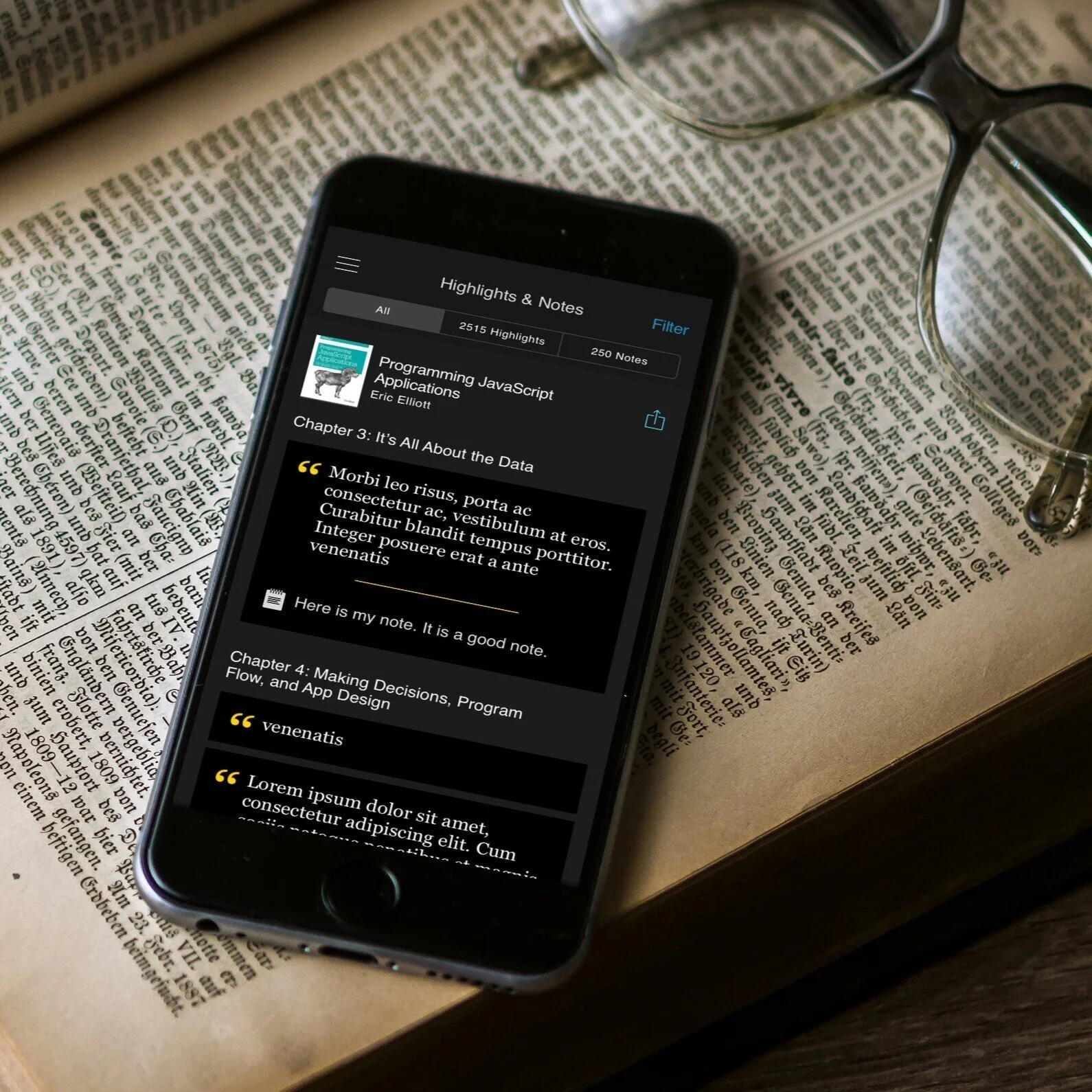Building the Netflix for technical books
Technical people want to create reference libraries for their specific expertise
There could be 1-1000 books a person wants to reference while working on a software project. How do we make our interface scalable for both extremes?
Engineers aren’t shy about their opinions of a good product
The great thing about developers is that they know what they want. The hard thing about developers is that they each want something bespoke. Oh, and the business suite was using it too, so using a CLI is not a solution.
Early Cleanup
The app on both iOS and Android, as it stood when I arrived, was a second-class citizen to the web site. It was poorly liked by the subscribers, and hovered around 3 stars in the App Store. Worse still, the app was being developed by an outsourced team in France who would be purchased by a drug company within 4 months of my start. My job, along with a fresh team of product managers, was to shore it up and improve the experience to the point that it could guide the web site rather than the other way around.
And so I got cracking. The first job was to clean up the existing screens and make the branding more prominent. I was not able to convince people to remove the hamburger for discoverability reasons, but the app immediately started to feel less like brown homework.
Power User ❤️
With that work building a foundation, I started working on specific additions and features that improved the lives of power users. Power users wanted to be able to tag items with their own lexicon, filter books, use keyboard shortcuts on their iPads, change the width of the margins, change the type size, add annotations, highlight things, watch videos without hating the interface, and switch through chapters quickly.
How did we know that and prioritize? Well, the magic of adding a chat-based in-app customer feedback plug-in manned by the UX Designer and Product Managers themselves of course! I was the front line of customer service and feature requests, and I was afforded the opportunity to ask questions of users for immediate feedback. This was all implemented through Slack, and I developed a complete “reactji” key for what each conversation related to. (For instance, 😿 was for a feature that wasn’t working.) This allowed us to accumulate the biggest pain points for our users to start chipping off the issues. We also did traditional interviewing of users, but the CS conversations were much more enlightening. They also taught myself and others how to calm down an irate user and turn them into promoters of our service. The fact that it was the very person who was in charge of redesigning the app was a big plus to users.
To allow users to filter items be topics, I prototyped and designed a method of hiding the power user tool above the top of the content area. When a user reached 25 titles in their library, they would see a tooltip at the bottom of the screen to onboard into the feature. From there, they could filter to their heart’s content.
And then we came to tagging books. Developers love to create tagging systems like Delicious is still around, but tagging is difficult on mobile interfaces due to the need to add, edit, and potentially merge tags if you fat-finger one or forget how you tagged something last month. It’s a bit of a UX nightmare. But we made it work gracefully!
First-time Product Manager
Right about this time, my good workmate Russell had had enough of being a Product Manager at O’Reilly and left the company. I took over his role, as I was already integrated into the team and working upstream on strategy with our other talented mobile product manager, Virginia Murdoch. This also happened right when we lost access to our contract engineers for the mobile apps, and Virginia and I began working to hire solid replacements.
We were an early remote team, and that gave us certain lifestyle advantages compared to other companies. We were also relatively stable at the time with enough goodwill with developers to be attractive. We landed some excellent talent, including Shaun Lewis. (Shaun recently wrote the book on how to work on a multi-platform native app team in a unified way.) We turned the team around and built a lasting culture.
The Takeover
Being able to see deeper into the organization was both liberating and difficult. The company was in the middle of a slow changeover from being partly owned by two competing companies to being wholly owned by O’Reilly Media only. The new leadership was much more commerce-focused and less communitarian in their approach, which was a major cultural shift. Virginia and I sheltered the mobile team from the strife as much as possible while advocating for a balance of old and new.
In this period, my superior Creative Director left, and my superior’s superior offered me the Creative Director job. I declined for two reasons: I did not think I wanted more exposure to the new leadership team; and I didn’t think my superior’s superior was going to be present much longer. The next week, I was indeed bossless and trying to decide if I wanted to be a part of the organization any more. All the while, we were building a team that was almost ready to really push the work higher.
So, I buried into the design work and solved a few more major issues and started looking for other work. Luckily, Stop, Breathe & Think was reconstituting as a startup, and wanted me to join. I left the team with about a year’s worth of features to implement, knowing that inevitably strategy would change before they got to them. It was difficult leaving Virginia and the engineers behind.
Lasting Impact
The team we rebuilt is still anchored by some of our hires, and has flourished while integrating the app into the larger O’Reilly ecosystem. Virginia moved on to run a big chunk of product at Culture Amp in her native Australia. Russell rejoined me at Stop, Breathe & Think. And I keep in touch with the leadership team that both stayed through the takeover and went on to better things.
Lastly, when I started, the app consistently hovered around ⭐️⭐️⭐️ on iTunes. When I left, it had moved above ⭐️⭐️⭐️⭐️. The Android app went from ⭐️⭐️ to ⭐️⭐️⭐️⭐️. If you have ever dealt with app stores, these are significant changes! It took the whole team, and I am proud of what we accomplished together.


















